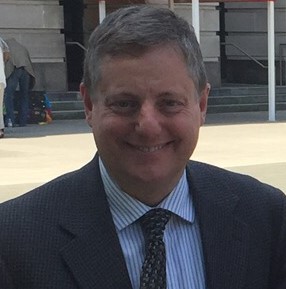When: This event originally occurred on November 9th, 2022 from 1pm – 3pm (EST). All presentations and materials have been archived for you to access as On-Demand content.
Criminal investigators increasingly rely on forensic evidence, but many observers claim that unreliable forensic science has contributed to wrongful convictions. When used effectively within a thorough investigation, forensic evidence can improve case outcomes and mitigate the risk of wrongful convictions. This webinar describes the interaction between investigators and forensic scientists in wrongful conviction cases and provides best practice insights that will be useful for the investigator or forensic scientist. Specific case studies will be used to illustrate issues related to crime scene investigation, effective communication, forensic technology, and misconduct.
PRESENTER
Dr. John Morgan

Dr. John Morgan is internationally recognized for his work in forensic science, body armor, special operations technology, and police technology. Dr. Morgan has served a member of the Maryland House of Delegates, Congressional Science Fellow of the American Physical Society, and Senior Director of the Center for Forensic Sciences at RTI International. He also served in the U.S. Department of Justice and the U.S. Department of Defense as a senior executive managing programs that encompass scientific research, public safety, military technology, special operations, information systems, and standards, including as Deputy Director for Science and Technology at the National Institute of Justice and the Combatting Terrorism Technology Support Office, as well as Command Science Advisor for the US Army Special Operations Command. He received the 2007 Service to America Medal for his work to improve the nation’s capacity to conduct DNA analysis.
Course DESCRIPTION
Criminal investigators increasingly rely on forensic evidence to solve cases and develop evidence to produce reliable verdicts. DNA, latent prints, digital evidence, and other forensic disciplines have become powerful tools in the modern era. Nonetheless, critics point out that forensic science may not be as reliable as its reputation. For example, the National Registry of Exonerations has now identified over 3,000 wrongful convictions, and about 25% of those cases included “false or misleading forensic evidence.” While popular media has covered many stories of these wrongful convictions, there is very little objective guidance to help the criminal investigator navigate the issues related to forensic science and wrongful convictions. This webinar provides a comprehensive review of wrongful convictions related to law enforcement use of forensic evidence, including root causes and suggested best practices.
While many forensic errors relate to mistakes by an individual, wrongful convictions demonstrate that all errors relate to system and organizational deficiencies that are observable and can be ameliorated. Contributing factors may arise at any point from the crime scene to the courtroom, including evidence collection and tracking, laboratory analysis, quality assurance, communication of results, police investigation, and testimony. Thus, the most impactful responses will encompass systemic improvements in the entire process.
Through case studies, this webinar will examine specific issues and relate lessons learned to the processes and practices of effective criminal investigation. Cases will be discussed within their historical, jurisdictional, and practical contexts. Particular attention will be given to the interaction between investigators and forensic scientists and issues related to cognitive bias, effective communication, chain of custody, and situations in which forensic evidence conflicts with other evidence. The webinar will also cover the effective use of emerging technologies, including cold hits and unproven forensic methods. Mechanisms and best practices to detect and mitigate misconduct related to forensic evidence will be discussed.
The student will receive supporting materials related to the issues and cases reviewed in the webinar, including case documentation and analysis. The instructor will answer questions during and after the webinar to provide further details and perspective, as needed.
*The course content has been reviewed by the ABFT and ABC, and determined to be acceptable for submission to the ABFT or ABC for continuing education credit.








